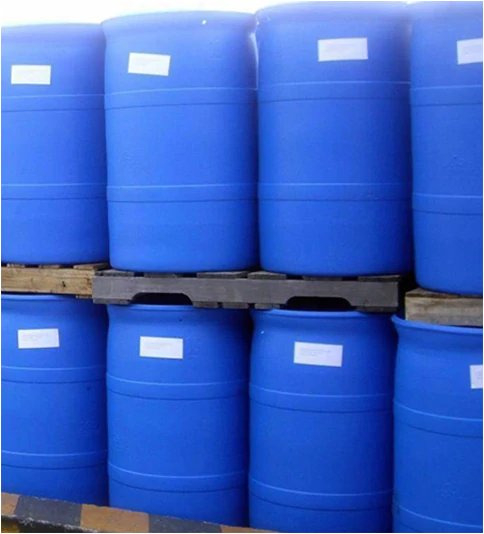
12 月 . 03, 2024 18:21 Back to list
freezing point depression constant of glacial acetic acid
Freezing Point Depression Constant of Glacial Acetic Acid
The study of colligative properties, which are properties that depend on the number of solute particles in a solvent but not on their identity, is crucial in understanding how various substances behave when mixed. One of the key concepts in this area is freezing point depression, which occurs when the freezing point of a solvent is lowered by the presence of a solute. Glacial acetic acid, a purer form of acetic acid, is a fascinating solvent to explore in this context due to its unique freezing point depression constant.
Understanding Freezing Point Depression
Freezing point depression can be quantified using the formula
\[ \Delta T_f = K_f \cdot m \]
Where - \(\Delta T_f\) is the change in freezing point, - \(K_f\) is the freezing point depression constant of the solvent, - \(m\) is the molality of the solute (moles of solute per kilogram of solvent).
In practical terms, if a non-volatile solute is added to a pure solvent, the solution will freeze at a lower temperature than the pure solvent. The extent of the depression is proportional to the molality of the solute and is a product of the freezing point depression constant specific to that solvent.
Freezing Point Depression Constant of Glacial Acetic Acid
freezing point depression constant of glacial acetic acid

For glacial acetic acid, the freezing point depression constant (\(K_f\)) is approximately 3.9 °C kg/mol. This means that for every mole of solute added to one kilogram of glacial acetic acid, the freezing point will be lowered by approximately 3.9 °C. This relatively high \(K_f\) value highlights the significant impact that solutes can have on the freezing point of glacial acetic acid, making it a valuable solvent in many laboratory applications.
Applications and Implications
1. Study of Molecular Interactions The high value of \(K_f\) for glacial acetic acid lends itself to studies involving molecular interactions. Researchers can use freezing point depression to glean insights about solute-solvent interactions, including hydrogen bonding, dipole interactions, and ionic dissociation. By observing how different solutes affect the freezing point of glacial acetic acid, scientists can infer valuable thermodynamic information.
2. Industrial Uses The unique freezing point characteristics of glacial acetic acid have important implications in various industries, including food preservation, where controlling freezing points is crucial. Additionally, in chemical manufacturing, understanding how to manipulate the freezing point of solvents can enhance efficiency and product stability.
3. Laboratory Techniques In analytical chemistry, glacial acetic acid’s freezing point depression constant is used in various experimental procedures, including determining molecular weights of unknown solutes through cryoscopic methods. This approach leverages the freezing point depression phenomenon to calculate the molar mass, showcasing the importance of \(K_f\) in everyday laboratory work.
Conclusion
The freezing point depression constant of glacial acetic acid is more than just a number; it represents a tool for understanding the intricate nature of solute-solvent interactions and has far-reaching implications in both scientific research and practical applications. By utilizing the principles of colligative properties, especially freezing point depression, chemists and researchers can better grasp the behavior of solutions, leading to advancements in both theoretical knowledge and applied science. As scientists continue to explore and manipulate these properties, the insights gained will undoubtedly propel further innovation across multiple disciplines, from chemistry to materials science and beyond. The understanding of \(K_f\) serves as a testament to the fundamental principles of physical chemistry and their relevance to real-world applications.
